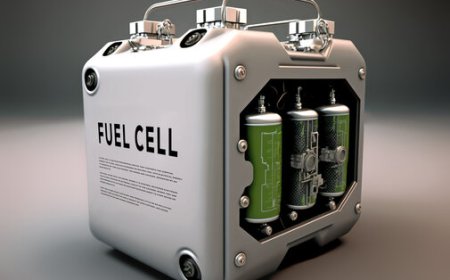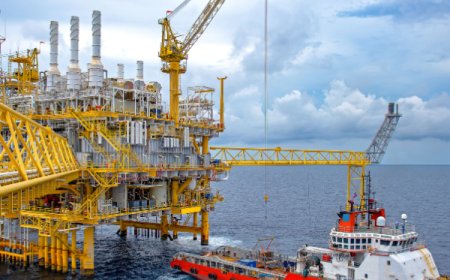Kerala Dam Mullaperiyar
The Kerala Dam Mullaperiyar remains a contentious issue due to its age and structural safety, fueling legal and environmental debates between Kerala and Tamil Nadu.

The Kerala Dam Mullaperiyar is not just an old damit is a symbol of British-era engineering, a point of political tension between two Indian states, and a critical piece of infrastructure still in operation today. Situated in the Idukki district of Kerala on the Periyar River, the Mullaperiyar Dam was constructed between 1887 and 1895 and continues to serve millions in Tamil Nadu, even though it is physically located in Kerala.
The dam, over 129 years old, has been the center of multiple debates surrounding safety, water rights, and environmental impact. The unique cross-state management of the Kerala Dam Mullaperiyar adds further complexity, making it one of Indias most discussed water management issues.
An Engineering Marvel of the 19th Century
Constructed during British colonial rule, the Kerala Dam Mullaperiyar was built with the goal of diverting water eastward to the drier regions of the Madras Presidency (now Tamil Nadu). The idea was to irrigate the rain-deprived districts of Theni, Madurai, Dindigul, and others.
The dam is a concrete gravity dam, meaning it holds back water through its sheer weight. At 155 feet (47 meters) in height and 1200 feet (366 meters) in length, the structure has formed the Periyar Lake, a vital reservoir.
Despite its location within Keralas geographical boundaries, the dam is managed by Tamil Nadu under a 999-year lease agreement signed in 1886 between the Maharaja of Travancore and the British Madras Presidency. This unusual arrangement still holds, making the Kerala Dam Mullaperiyar a rare example of cross-state infrastructure governance in India.
Purpose and Importance of the Kerala Dam Mullaperiyar
The original purpose of the Kerala Dam Mullaperiyar was straightforwardto supply water for irrigation in Tamil Nadu. Over time, its uses have expanded to include:
-
Irrigation: Supports farming across approximately 2.08 lakh hectares in Tamil Nadu.
-
Drinking Water: Provides water to thousands of households.
-
Hydroelectric Potential: Contributes to small-scale electricity generation.
-
Flood Management: Regulates water flow during monsoons.
For Tamil Nadu, the dam is indispensable. Without the water it provides, agriculture in the southern districts would face severe setbacks.
Safety Concerns and Keralas Opposition
While Tamil Nadu views the Kerala Dam Mullaperiyar as a lifeline, Kerala has been increasingly concerned about the dam's safety and structural stability, especially considering its age and location in a seismic zone.
Some of the major safety concerns include:
-
Earthquake Vulnerability: The region has experienced seismic tremors, which raises concerns about the dams ability to withstand major earthquakes.
-
Heavy Rainfall: Keralas intense monsoons increase the pressure on the dam, particularly during flood events.
-
Structural Weakness: Built with 19th-century materials and technology, the dam may no longer meet modern safety standards.
Because of these risks, Kerala has demanded:
-
Lowering the maximum water level in the reservoir.
-
Conducting regular, independent safety audits.
-
Constructing a new dam downstream to replace the existing one.
The safety of residents living downstream is a pressing concern for the Kerala government, which argues that a failure of the Kerala Dam Mullaperiyar could lead to catastrophic flooding in densely populated areas.
The Role of the Supreme Court and Legal Disputes
Given the competing interests of the two states, the matter has been repeatedly taken to the Supreme Court of India. In 2006, the court permitted Tamil Nadu to increase the water level to 142 feet, subject to safety enhancements. Further rulings in 2014 reaffirmed this decision, while also establishing a Supervisory Committee to monitor the dams status.
Despite these rulings, Kerala has continued to push for constructing a new dam, citing the increasing risks posed by aging infrastructure and climate change.
The Supreme Court's involvement underscores the national importance of the Kerala Dam Mullaperiyar. It is not just a local issueit is a national model for water-sharing, disaster management, and inter-state cooperation.
Environmental and Ecological Considerations
Another layer to the debate around the Kerala Dam Mullaperiyar involves its environmental impact. The dam lies within the Periyar Tiger Reserve, one of Keralas most important biodiversity hotspots. The Periyar Lake, formed by the dam, supports a wide variety of wildlife including elephants, tigers, sambar deer, and various bird species.
While the lake benefits wildlife by ensuring a year-round water source, sudden water releases or dam failure would have disastrous consequences for the ecosystem. Environmentalists argue that any plans regarding the dams future must also consider long-term ecological sustainability.
Tourism and Local Economy
Despite the controversies, the Kerala Dam Mullaperiyar continues to attract thousands of tourists each year. Located near the town of Thekkady, it offers scenic views of Periyar Lake and opportunities for boating and wildlife spotting.
The dam and the surrounding Periyar Wildlife Sanctuary contribute significantly to the local economy through tourism. However, increasing safety concerns have occasionally led to restrictions on tourist activities, affecting local livelihoods.
Future of the Kerala Dam Mullaperiyar
As climate change accelerates and rainfall patterns become more unpredictable, the pressure on old infrastructure like the Kerala Dam Mullaperiyar is growing. Several proposals have been floated to resolve the issue:
-
Build a New Dam: Keralas preferred option, with modern safety features and improved capacity.
-
Strengthen Existing Dam: Tamil Nadu favors reinforcing the current structure, as has been done in past decades.
-
Revisit the 999-Year Lease: Legal experts and environmentalists alike suggest that an agreement from the colonial era may no longer be valid in todays context.
-
Enhanced Monitoring and Transparency: Regular safety checks, seismic monitoring, and water-level tracking can offer interim solutions.
Conclusion: Bridging the Past and the Future
The Kerala Dam Mullaperiyar stands at the confluence of history, utility, and uncertainty. Built over a century ago, it continues to deliver life-sustaining water to Tamil Nadu while posing modern-day risks to Kerala. The dam is a test case for Indias federal structure, showing both the strengths and limits of interstate cooperation.
Moving forward, a balanced, transparent, and science-driven approach is essential. Both states must work togetherwith guidance from central authorities and technical expertsto ensure that the Kerala Dam Mullaperiyar remains not just a symbol of the past, but a secure and sustainable asset for the future.




























